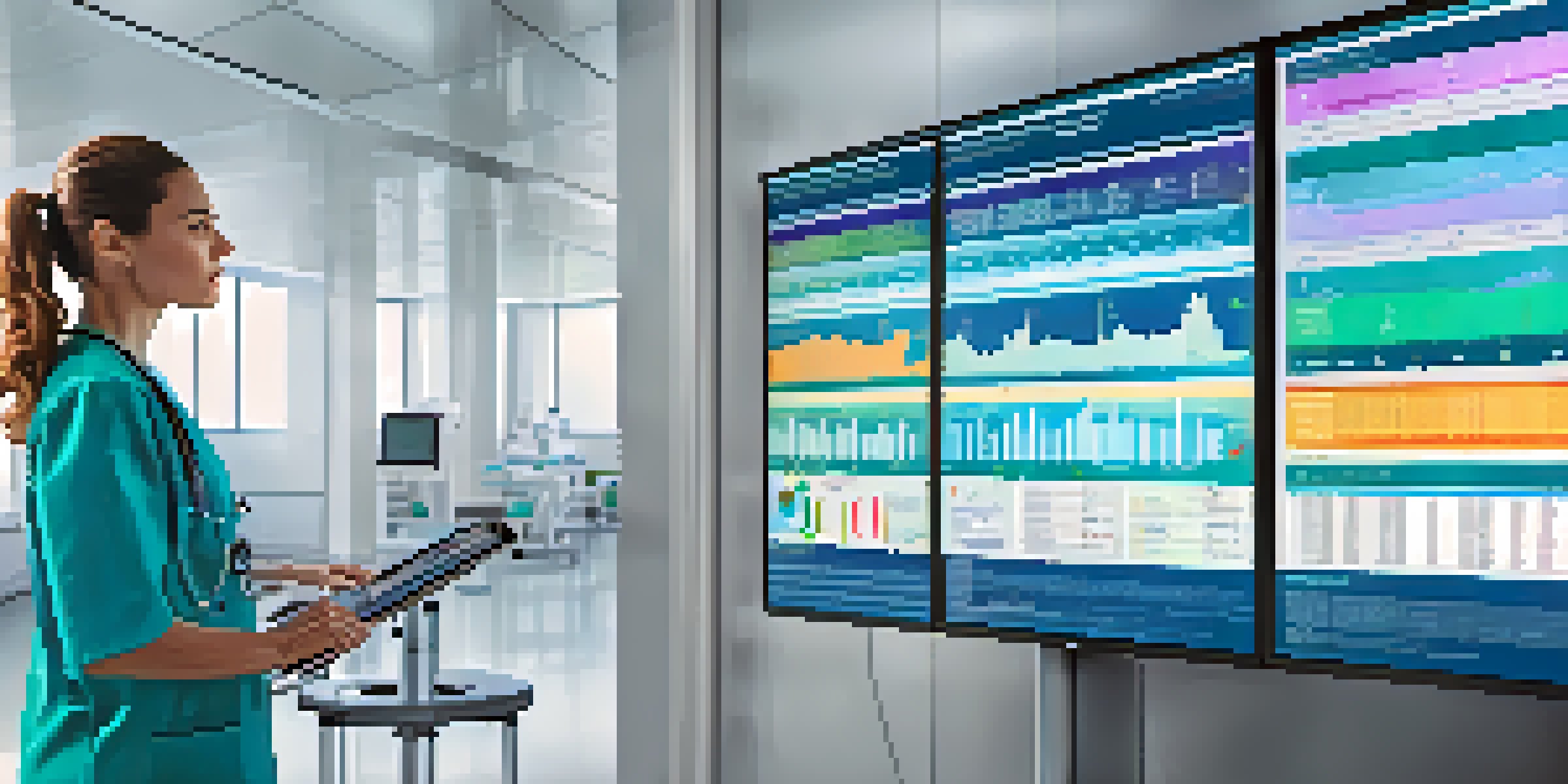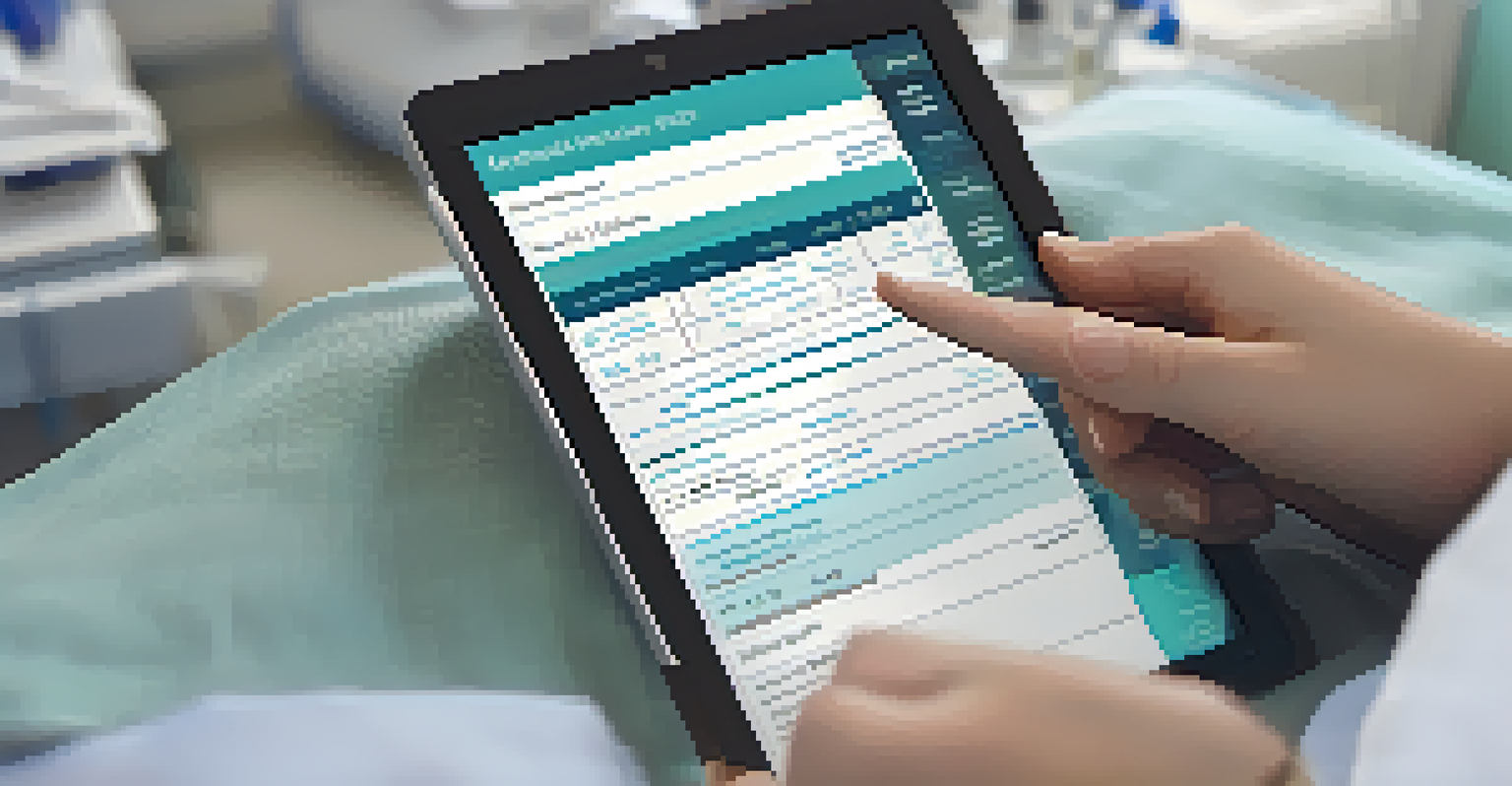Harnessing Big Data in Electronic Health Records

Understanding Big Data in Healthcare
Big data refers to the vast amounts of information collected from various sources. In healthcare, this includes patient records, lab results, and even wearable devices. The ability to analyze this data offers invaluable insights into patient care and operational efficiency.
Data is the new oil. It’s valuable, but if unrefined it cannot really be used.
Think of big data as a treasure trove of information. When properly harnessed, it can reveal patterns and trends that help improve treatment outcomes. For example, analyzing historical data can identify which treatments are most effective for specific conditions.
Moreover, big data helps in predictive analytics, allowing healthcare providers to foresee potential health issues before they arise. This proactive approach can lead to better patient management and resource allocation.
The Role of Electronic Health Records (EHR)
Electronic Health Records (EHR) are digital versions of patients' paper charts. They provide a comprehensive view of a patient's medical history, making it easier for healthcare providers to access and share vital information. EHRs are crucial in the big data landscape as they form a significant part of the data pool.

With EHRs, doctors can quickly check previous diagnoses, medications, and allergies, which enhances decision-making. Imagine trying to piece together a puzzle without the corner pieces; EHRs provide the essential pieces that help create a clear picture of a patient's health.
Big Data Enhances Patient Care
By analyzing vast amounts of health data, providers can tailor treatments to individual patients, improving outcomes.
Additionally, EHRs can be integrated with other data sources, such as lab results and imaging reports, further enriching the data available for analysis. This integration is essential for creating a holistic view of patient care.
Data Analytics: Turning Numbers into Insights
Data analytics involves examining raw data to draw meaningful conclusions. In the context of EHRs, analytics can help identify trends in patient health, treatment efficacy, and even the spread of diseases. This process is akin to sifting through sand to find gold nuggets.
Without data, you're just another person with an opinion.
Healthcare providers can use these insights to tailor treatments to individual patients. For instance, if data reveals that a certain demographic responds better to a specific medication, doctors can make more informed choices.
Furthermore, predictive analytics can help anticipate patient needs, allowing for timely interventions. This not only enhances patient outcomes but also optimizes resource utilization within healthcare facilities.
Enhancing Patient Care through Personalization
One of the most significant advantages of harnessing big data through EHRs is the ability to personalize patient care. By analyzing individual health data, providers can create customized treatment plans that cater to a patient's unique needs.
For instance, if a patient has a history of asthma, their care plan can include specific medications and lifestyle recommendations tailored to their condition. This personalization improves adherence to treatment and ultimately leads to better health outcomes.
EHRs Are Key Data Sources
Electronic Health Records provide a comprehensive view of patient history, facilitating better decision-making and care.
Moreover, personalized care can enhance the patient experience, making individuals feel valued and understood. When patients see that their healthcare providers are attentive to their specific needs, it fosters trust and encourages open communication.
Improving Operational Efficiency in Healthcare
Big data not only benefits patient care but also enhances operational efficiency within healthcare organizations. By analyzing workflow patterns, hospitals can identify bottlenecks and streamline processes, leading to faster patient care.
For example, analyzing EHR data can reveal peak admission times, allowing hospitals to allocate resources more effectively. This optimization can reduce wait times and improve overall patient satisfaction.
Additionally, using data analytics to forecast demand for services can help healthcare facilities prepare for fluctuations, ensuring they are always equipped to handle patient needs efficiently.
Identifying Public Health Trends with Big Data
Big data can play a pivotal role in identifying public health trends and outbreaks. By analyzing large datasets from EHRs, public health officials can monitor disease patterns and respond proactively to emerging health threats.
For instance, if a spike in flu cases is detected in a particular area, health authorities can quickly mobilize resources and implement preventive measures. This is akin to having a weather forecast that alerts you about a storm before it hits.
Operational Efficiency through Analytics
Data analytics helps healthcare organizations streamline processes and optimize resource allocation for faster patient care.
Moreover, big data can help in tracking the effectiveness of public health initiatives, enabling authorities to adjust strategies for better outcomes. This proactive approach is essential in maintaining community health and safety.
Navigating Privacy and Security Challenges
While big data offers numerous benefits, it also raises significant privacy and security concerns. With vast amounts of sensitive patient information at stake, ensuring data protection is paramount. Healthcare organizations must implement robust security measures to safeguard against breaches.
Think of patient data as a valuable treasure; just as you would secure your valuables, the same goes for health information. Encryption, access controls, and regular audits are essential practices to protect against unauthorized access.

Moreover, clear policies regarding data sharing and usage must be established to foster trust between patients and healthcare providers. Transparency about how data is used can alleviate concerns and encourage patients to engage more openly in their care.